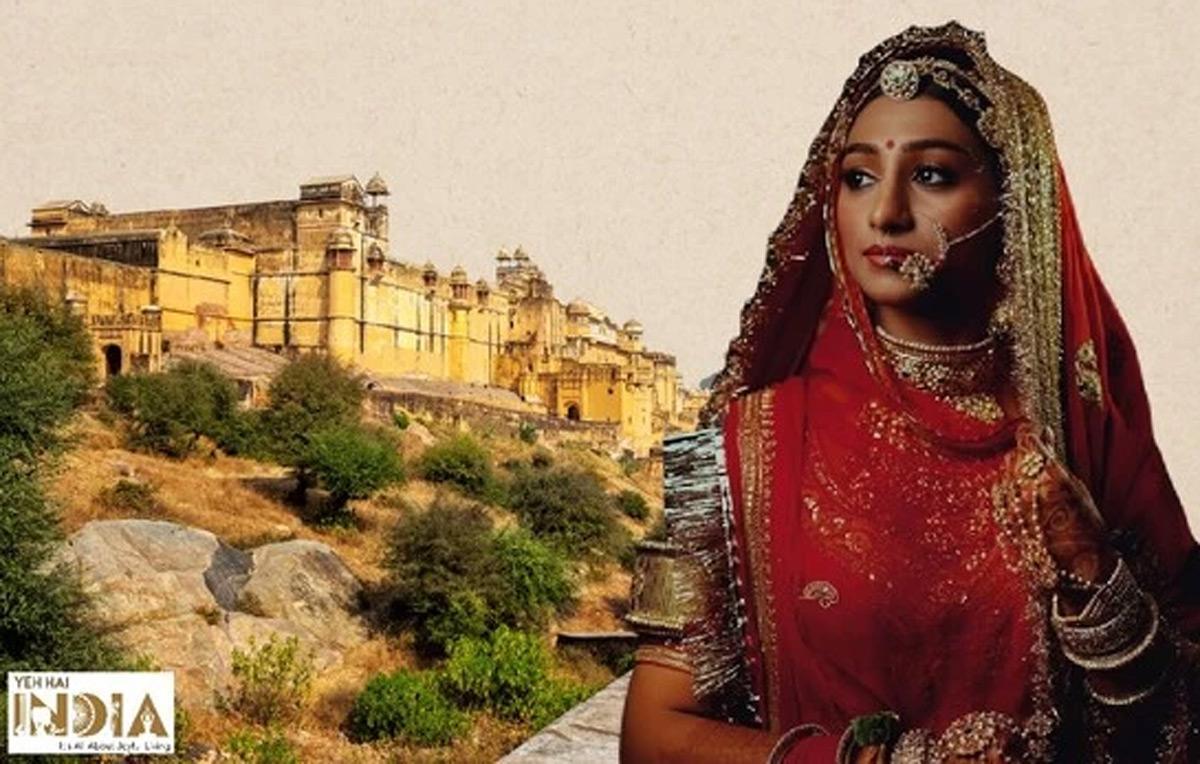Africa-Press – Lesotho. From New Delhi, the trip to the land of the proud and feisty Rajput kingdoms, a semi-arid territory of mountainous terrain and the famous Thar desert of moving sand dunes of some 200,000 sq.
km constituting a natural frontier with Pakistan, was not to be missed as Rajasthan is indeed, India’s most visited tourist destination. I had decided to vacate the unmissable universal tribute to love, the Taj mausoleum and Agra forts in Uttar Pradesh on my first full-day sightseeing from New Delhi.
Distraught at the death of his beloved wife who bore him 14 children and accompanied him on his military expeditions, Shah Jahan had this architectural marvel of white marble, surrounded by acres of gardens, built as an enduring tribute to his lifelong love and where both would ultimately be laid to rest.
The Essence of Rajasthan.
Pic – Jaipur Explore With tourist tickets at INR 1200, I was relieved that my OCI card allowed me entry at Indian visitor prices of some INR 200, a reminder that was to be useful throughout my museum, palace, royal gardens, and other visits elsewhere. I also learned to be wary of coach tours, which dragged us on an unplanned extension to Mathura and Vrindavan late afternoon.
It should have been a total immersion in temples, ashrams, cultural heritage, and profound spirituality, but after the full day of trekking, it was an extended evening annoyance that, with due respect to their faith and beliefs, only devout lovers of Lord Krishna, from various parts of India enjoyed, despite being pressed for donations in that particular temple doing brisk Godly business.
Despite or maybe because of my upbringing, I could not reconcile the hard-sell techniques, or the millions raked in annually with the shabby surrounds of that particular temple complex, its unlit pot-holed streets, its lack of decent amenities and the hundreds of monkeys, particularly fond of eyeglasses and mobiles, waiting to pounce on unwary visitors! This was an unholy hold-up as there are hundreds of other brightly lit, well maintained Krishna temples, ashrams, guesthouses, and spiritual centers in Vrindavan (or Mathura) which deserve a full two-day stay by religious or spiritually minded visitors.
Returning by the coach at near midnight in New Delhi, I was too exhausted and annoyed to bear testimony to the spiritual dimensions of that trip extension to Lord Krishna’s alleged birthplace (Mathura) and playground (Vrindavan).
Back the next day for the a/c comfort of India’s rail network for the discovery of what I knew was a land of continuous battles between separate and non-unified Rajputana fiefdoms against marauding invaders first from Arabs, who had been decisively halted at Sindh, and departed, leaving the centuries long invasion/conversion attempts to their Turk, Afghan or later, Moghol fiercer horsemen and cavalries.
The whole area was also a present-day remnant, at least in part, of the much older Indus Valley civilisation, starting 6-8000 BCE, that spanned the whole twin river valley (Indus and Saraswati) mentioned in the Vedas and its extension into more uphill lands, ports and trading outposts of that vast empire, fabled amongst other things, for its agricultural output, including prized livestock of elephants, camels and horses, handicraft and jewellery, attracting caravans of traders from as far away as Oman, the Arabian peninsula, Iran, Afghanistan, Turkey and Greece.
This was quintessentially a wealthy and wide-ranging trading empire with considerable mathematical and astronomical knowledge, high city development skills, based on an entirely autonomous ingenuity, as confirmed by a vast array of scientific evidence including population genetics, (apart from a growing academic literature, interested readers can consult the special issue of Sciences et Avenir, no 163, 2010) with a sophisticated language developed for spiritual delvings, Vedic Sanskrit, source of many Indo-European languages, and a profoundly monist core of beliefs with one Supreme Lord manifesting itself in various ways over the material, visible and non-visible spiritual world.
That civilisation and its inhabitants, constantly ruffled by annual floods of fertile silt from monsoon or Himalayan glaciers, fearful of the « kali yug » predicted by its own theologians (around 3100 BCE), migrated to higher shores with shreds of their beliefs and practices and found a terminal decline, according to geological evidence and satellite imagery, when they fled, around 1900 BCE a vast tectonic movement that engulfed its thriving ports, its orderly cities and dried up the Saraswati.
It was with all this background that I eagerly awaited to plunge into the main cities of Rajasthan and get, at best, a whiff of its most notable three gems Jaipur, Jodhpur and Udaipur, in far too brief a first discovery trip full of magnificent scenery, including its lakes and rivers, its desertic Thar proximity, the majestic forts and palaces whose restored remains have given rise to many sumptuous accommodation experiences for the wealthy travellers.
Most of this one can find by perusing any travel site, publication, travel tour guides on that state and my personal experience was far more mundane and limited.
Jaipur, the state’s bustling capital of 4m, aka the Pink City, has a multitude of temples, including one of the several Birla temples in India, a delightful mandir in white marble, dedicated to Narayan and Lakshmi Devi, the architectural oddity of the Hawa Mahal (palace of winds) and the extraordinary 18th century concrete observatory (Jantar Mahal) one of several built by the learned Maharaja Jai Singh (from which the name Jaipur) and visited by European and other astronomers of the times for the most precise stellar and planetary measurements and observations.
For More News And Analysis About Lesotho Follow Africa-Press






